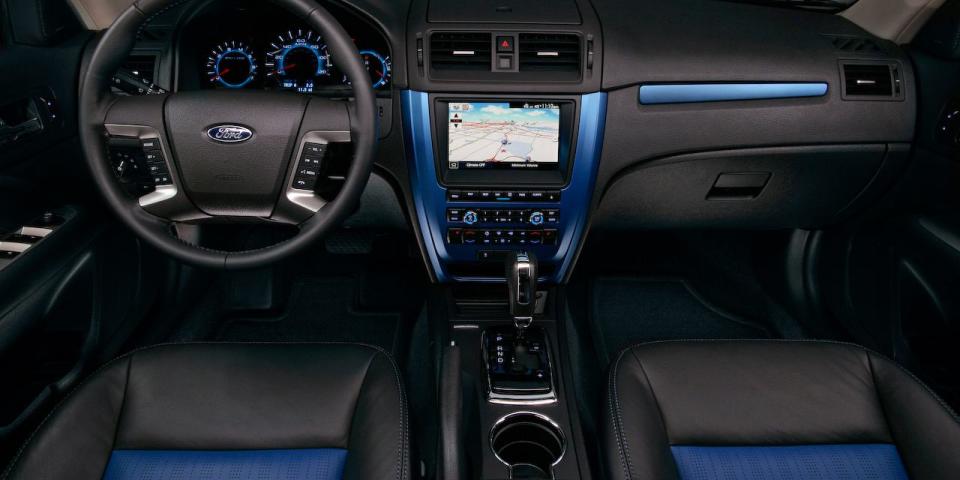2010 Ford Fusion

Turning and stopping, however, proved to be a mixed bag. On an autocross that Ford had set up, the four-cylinder’s steering responded directly if not terribly quickly to inputs, and being electric, it never outran its assistance in the slalom areas. The myriad chassis improvements include reworked front suspension geometry. The stability-control system is subtle and unobtrusive, allowing quite a bit of drift before reining in the fun. The electro-nannies in the ’09 Toyota Camry that Ford brought along for comparison purposes were far more aggressive - and annoyingly vocal - in their stabilizing directives, and its hydraulic steering was quick to cavitate.
Touring the gorgeous mountainous roads north of Malibu, California, in a 3.0-liter V-6 model, we noticed nuances we didn’t pick up on during the autocross portion with the four-pot. The 3.0-liter’s additional 19 hp and 18 lb-ft of torque - output is now 240 hp and 223 lb-ft - are indeed noticeable, and the E85 capability is appreciable for residents of the upper Midwest. (Ford’s 0–60 estimate is a conservative 7.9 seconds; we tested the 221-horse car at 7.4.) But the V-6’s droney sound quality remains devoid of soul. On the road, we also noticed that the Fusion’s steering quality, while comfortably weighted immediately off-center, gets rubber-bandy the further the wheel is turned. Not helping matters are brakes that lack feedback during the first half of pedal travel, which seems like an eternity when approaching a craggy rock face at a heady clip.
Not surprisingly, the Fusion Sport, with its 263-hp 3.5-liter V-6, proved the most enticing. Our sample was also equipped with all-wheel drive, a rarity in this class and, as before, available only with V-6–powered Fusions. As such, the engine’s 249 lb-ft of torque propels the 3800-lb sedan (3600 pounds with front-wheel drive) with little trouble. Ford claims a 7.0-second 0–60 time, which seems a touch pessimistic from the seat of our pants, and, if the rest of the company’s conservative estimates are anything to go by, will prove so. Better still, the aural quality is much better than that of the 3.0-liter mill, and indeed, as installed in the Fusion, it sounds better than many of the other FoMoCo products in which it also appears.
Manu-matic shifting in V-6 Fusions (four-cylinder models do not offer a manual mode for their automatic) helps keep the motor in the meat of the powerband (and it won’t upshift at redline), but the lever movement itself is highly unpleasant, actuating with a thwack that’s followed about a half-second later by the shift itself. Ford claims that the system matches revs as it downshifts, but we didn’t notice much of that as we charged through the mountains and canyons that late fall afternoon, so if it happened at all, it is a subtle powertrain action and nothing like that of the wonderful, vocal downshifts found on the Jaguar XK and XF, for example. We did not have a chance to sample the four-cylinder/six-speed-manual combo.
Better Than Ever, But Better Than the Rest?
The Fusion is much improved from bumper to bumper, and it’s better prepared than ever to meet the high expectations of mid-sized sedan buyers. Surely, it will fare better in comparison tests than it has in the recent past. Just how much better remains to be seen, but at this point, we don’t see it beating the Mazda 6 or Honda Accord in the enthusiast-appeal department. But for those inclined to buy from American brands in order to help Detroit out of the current financial mess, it may indeed give the Chevy Malibu a good run for its American money. Prices will range from $19,995 for a four-banger, front-drive S model to $28,400 for an all-wheel-drive V-6 Sport when the Fusion goes on sale next spring.
You Might Also Like

 Yahoo Autos
Yahoo Autos 